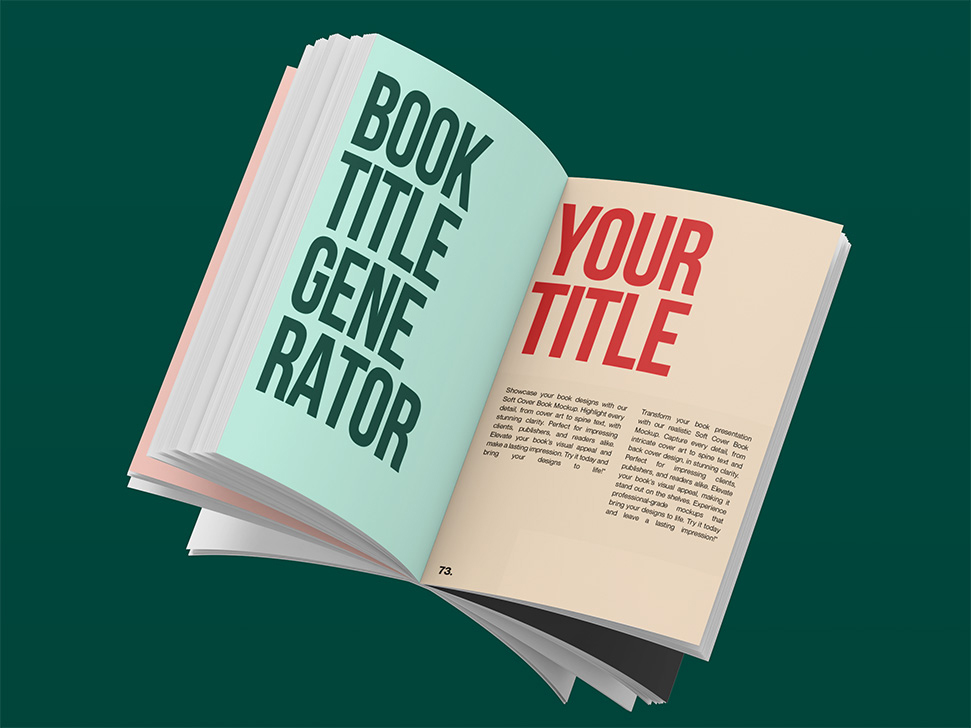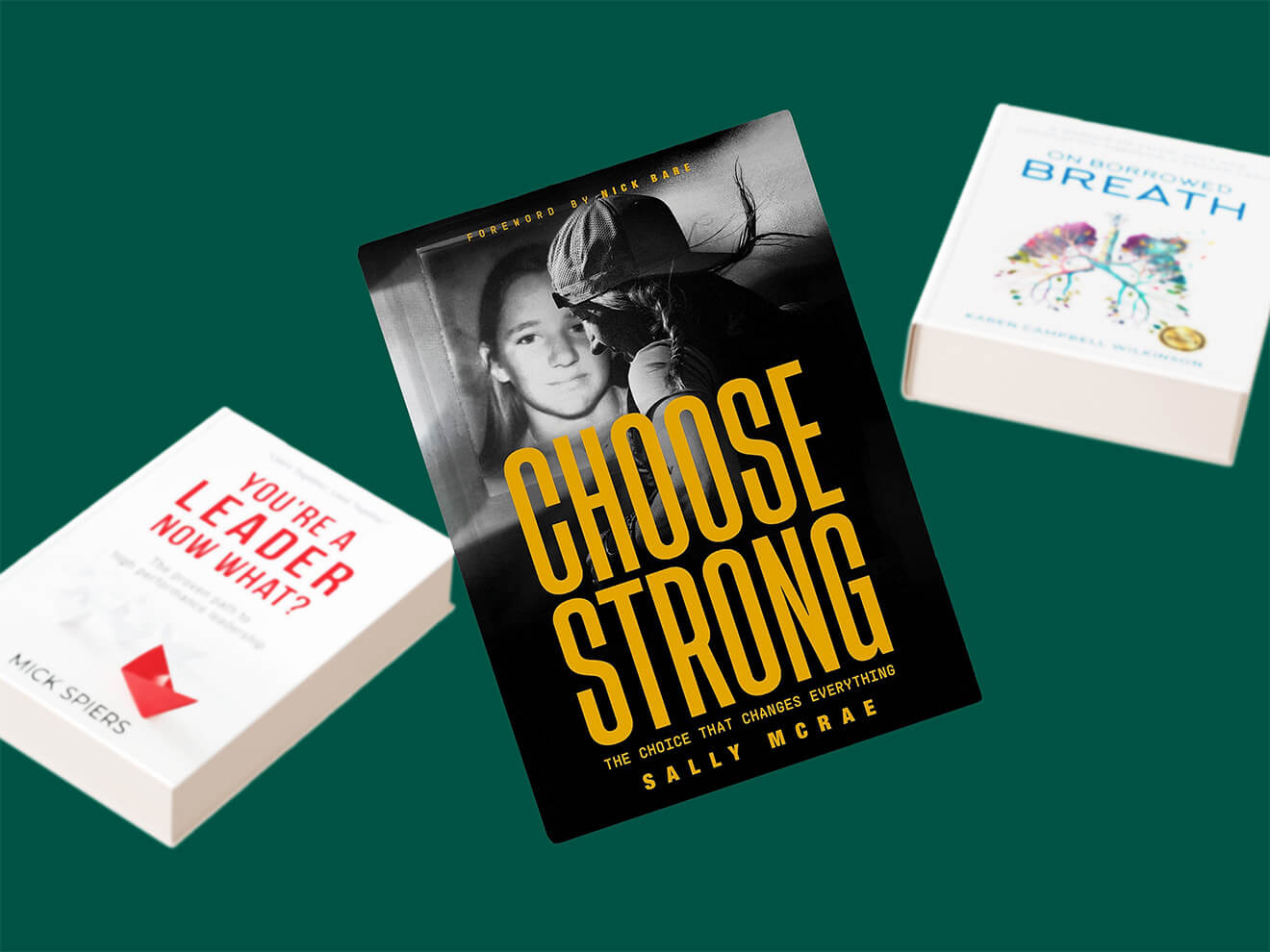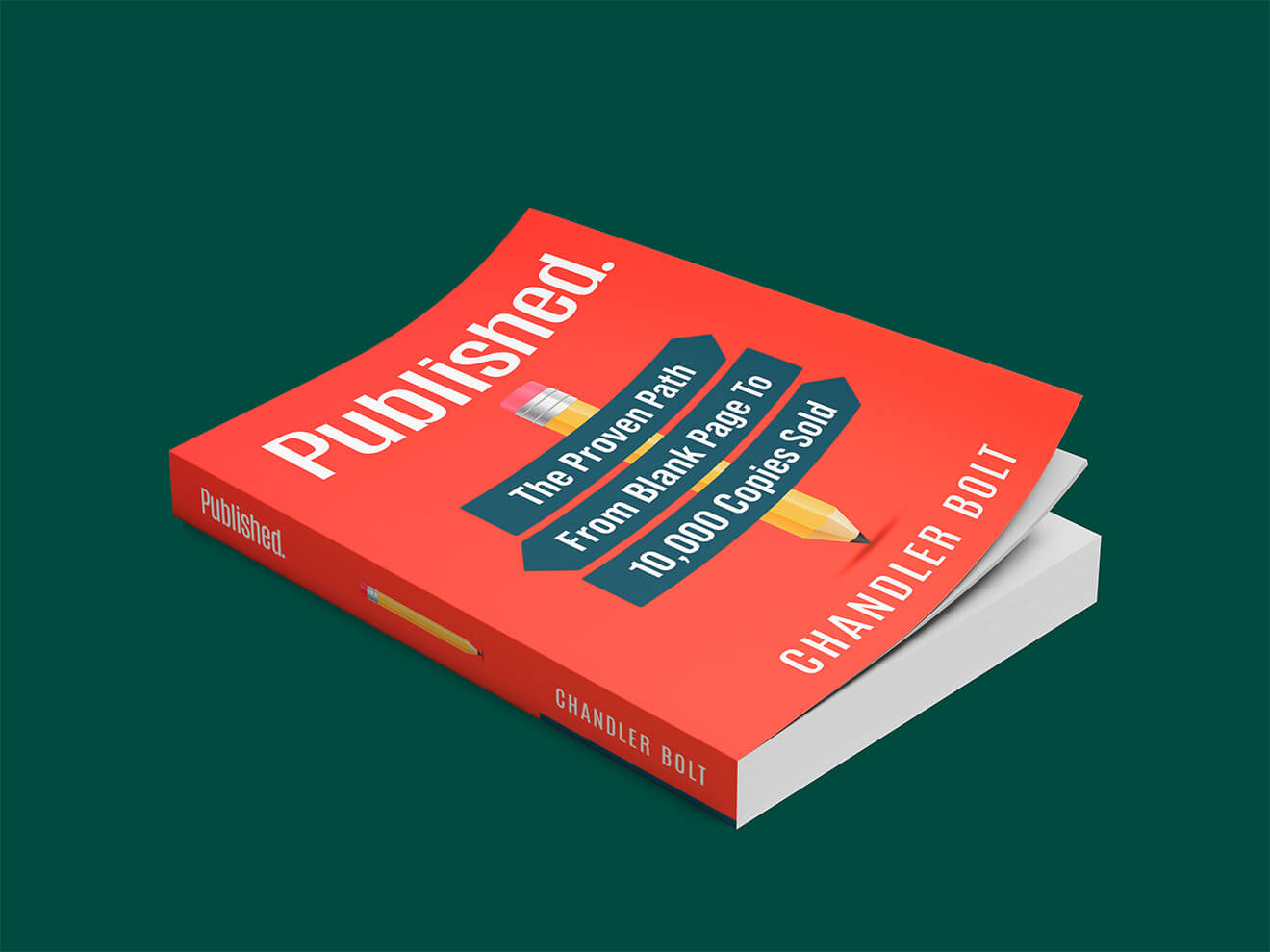Learning how to write a book is an exciting journey, but it can feel overwhelming at first.
Where do you begin? How do you stay motivated? How do you transform an idea into a fully developed manuscript?
This guide will take you through the process, step by step, to help you write your book with confidence.
Whether you’re writing fiction, nonfiction, or a memoir, following this structured approach will set you up for success.
Let’s begin with an essential first step for any aspiring author – proper preparation!
Phase 1 – Preparation: Laying the foundation

Before you start writing, it’s crucial to build a strong foundation.
This phase will help you clarify your goals, define your audience, and establish the habits necessary for long-term success.
Step 1: Discover your why
Why are you writing this book?
Your motivation is the key to completing the publishing process.
Whether you’re writing to share knowledge, tell a story, or establish yourself as an expert, having a clear purpose will keep you going when challenges arise.
Many bestselling authors have a powerful reason behind their books.
J.K. Rowling wrote Harry Potter after experiencing personal struggles and wanting to create an immersive world. Tim Ferriss wrote The 4-Hour Workweek after realizing he was trapped in a work cycle that didn’t serve his desired lifestyle.
Exercise
Write a one-sentence mission statement for your book.
Example: “I want to write this book to help aspiring entrepreneurs build a profitable business from scratch.”
Step 2: Find a book idea that excites you
How do you choose the right book idea?
If you’re struggling to settle on an idea, use this 3-step process:
1. Brainstorm freely: Write down every idea, no matter how simple or complex.
2. Research market trends: Check Amazon bestsellers, trending genres, and reader demand.
3. Validate your idea: Ask potential readers or test content (via blogs, social media, or short-form content) to gauge interest.
If you find yourself consistently drawn to a particular idea or topic, that’s a strong sign it’s worth pursuing.
Market research tip
Identify patterns in successful books and look for gaps you can fill.
For example, if most books on leadership are written for corporate executives, but you want to write for small business owners, that’s a niche you can target.
Step 3: Define your target reader
Who is your book for?
Great books are written with a clear audience in mind.
If you know exactly who you’re writing for, you can shape your content to match their needs, struggles, and expectations.
Use this quick target reader formula:
- Who are they? (Age, gender, profession, interests)
- What are their pain points? (Challenges they face that your book will address)
- What do they want? (Transformation or knowledge they’ll gain from your book)
Example
“Sarah, 35, is a busy entrepreneur struggling to grow her online business. She’s looking for actionable marketing strategies that fit her hectic schedule.”
Case study
Many successful nonfiction books are based on a deep understanding of their audience.
James Clear’s Atomic Habits became a bestseller because it addressed the common struggle of building good habits while overcoming procrastination.
Step 4: Create time & space to write
How do you fit writing into your life?
Writing a book requires consistent time and space.
Here’s how to make it happen:
1. Schedule non-negotiable writing time – Pick specific days and times each week for writing. Even 30 minutes a day adds up over time.
2. Use micro-writing sessions – Instead of waiting for long blocks of time, write in short bursts of 15-20 minutes whenever possible.
3. Track progress & stay accountable – Use tools like word count trackers or writing apps to stay on course.
4. Eliminate distractions – Consider using website blockers, noise-canceling headphones, or a dedicated writing space.
Real-world example
Stephen King writes every morning at the same time, while Maya Angelou rented a hotel room just to have an isolated space to write.
Pro Tip: Parkinson’s Law states that work expands to fill the time available. If you set tighter deadlines, you’ll likely get more done in less time.
Step 5: Choose a writing method (outline or freewriting)
Should you outline your book or just start writing?
There are two main writing approaches:
- Outlining (Plotters)
You create a structured roadmap before writing.
Great for nonfiction, complex stories, or those who like organization. - Discovery Writing (Pantsers)
You start writing with minimal planning, letting the story unfold naturally.
Best for creative exploration and spontaneity.
But which method should you use?
Outlining
For writers who need structure, and can overlook the potential to feel rigid and limit creativity.
Discovery Writing
For writers who enjoy spontaneity and are aware that their work may require heavy revisions.
Popular outlining methods
There are many ways to outline a book, but if you need some help getting the process going, you might find the following techniques useful.
1. The Snowflake Method → Best for complex stories with multiple layers.
2. The Three-Act Structure → Great for fiction writers.
3. Mind Mapping → Ideal for visual thinkers who like a flexible framework.
Exercise
If you’re outlining, create a simple book structure with chapters or key topics.
If you prefer discovery writing, set a goal to write 500 words a day without worrying about structure.
Phase 2 – Writing: Crafting your first draft

Now that you’ve built a strong foundation, it’s time to start writing!
This phase focuses on overcoming common roadblocks, staying productive, and getting words on the page.
Step 6: Set realistic writing goals
Setting realistic goals will help you maintain momentum and stay motivated throughout the writing process.
Without clear, achievable goals, it’s easy to procrastinate or feel overwhelmed.
1. Choose the right goal type
While every writer needs a goal, the type of goal you choose to set can be of several different types.
Consider –
Word count goals: Aim for 1,000–2,000 words per session. Writing daily can complete a 60,000-word book in about two months.
Time-based goals: If word count feels restrictive, commit to writing for 1–2 focused hours per session.
Chapter-based goals: If you prefer milestones, aim to complete one chapter per week.
2. Experiment with different writing paces
Some writers thrive under pressure, while others prefer a gradual pace:
Fast writers: Challenge yourself with short-term sprints (e.g., NaNoWriMo-style writing bursts).
Slow and steady writers: Write in smaller, consistent chunks over a longer period.
You might also find that your pace changes during different parts of the process. That’s no problem – it’s all about finding what works for you and your book.
3. Use milestone tracking
One of the best ways to ensure you stay on track is by setting milestones or checkpoints for your book.
The milestones you choose to set are whatever are the best fit for your book and way of working, but you might want to consider:
- Setting weekly and monthly benchmarks.
- Tracking progress using writing apps or a simple journal.
4. Stay flexible
Adjust your goals if needed—consistency matters more than rigid deadlines.
The key is to keep moving forward, no matter the pace.
By structuring your writing goals around your personal work style, you’ll find it easier to stay committed and make steady progress.
Step 7: Build a consistent writing habit
Writing a book isn’t just about motivation—it’s about habit.
The most successful authors don’t wait for inspiration; they create routines that make writing second nature.
By building a consistent writing habit, you can avoid procrastination, increase productivity, and make steady progress toward your finished book.
1. Anchor writing to a daily routine
Link your writing sessions to an existing habit (e.g., writing right after morning coffee or before bed).
This technique, known as habit stacking, makes it easier to stick with writing long-term.
2. Create a pre-writing ritual
Signal to your brain that it’s time to write by using a simple pre-writing routine.
Examples
Lighting a candle, listening to a specific song, journaling for five minutes, or reading a writing prompt before starting.
3. Set up an accountability system
It’s a lot easier to slack off when nobody else is watching.
To avoid that temptation, build accountability into your book writing process, with techniques like –
Public commitment: Tell a friend, writing group, or online community about your goal.
Writing trackers: Use tools like word count logs, habit-tracking apps, or a bullet journal to track progress.
Writing buddies: Partner with another writer to check in daily or weekly.
4. Write even when you don’t feel like it
The key to consistency is showing up daily, even if you’re not inspired.
Many bestselling authors, including Stephen King and Haruki Murakami, stick to strict daily writing schedules to maintain momentum.
The idea is to make progress on your book steadily, regardless of what mood you happen to be in on any given day.
5. Avoid perfectionism — focus on progress
Your first draft won’t be perfect, and that’s okay!
Writing consistently matters more than writing flawlessly.
Use the two-minute rule – If writing feels too difficult, commit to writing for just two minutes—this lowers resistance and often leads to longer sessions.
By embedding writing into your daily life and making it a non-negotiable habit, you’ll dramatically increase your chances of completing your book.
Step 8: Overcome writer’s block and stay motivated
Every writer, no matter how experienced, faces writer’s block at some point.
The key isn’t avoiding it—it’s learning how to push through it.
Here are proven strategies to stay motivated and keep writing even when inspiration feels out of reach.
1. Change your writing environment
A fresh setting can spark creativity.
Try writing in a different room, a coffee shop, or even outdoors.
Some authors, like Maya Angelou, rented hotel rooms for distraction-free writing.
2. Use writing prompts and exercises
If you’re stuck, use a writing prompt to kickstart ideas.
Freewriting: Set a timer for 10 minutes and write anything that comes to mind—no judgment, no editing.
3. Set “easy wins”
Instead of forcing a full chapter, write a simple scene or short section.
Completing small goals builds momentum and confidence.
4. Step away and recharge
Sometimes, the best way to beat writer’s block is to take a short break.
Go for a walk, listen to music, or read something unrelated to your book.
5. Keep an idea journal
Write down thoughts, snippets, and random ideas as they come.
When stuck, revisit your journal for inspiration.
6. Develop a “minimum writing commitment”
Commit to writing at least one sentence per day—this keeps your brain engaged with your book.
Many times, that single sentence will turn into a paragraph, then a page!
Overcoming writer’s block isn’t about eliminating it—it’s about having the right tools to navigate through it.
Stay flexible, stay persistent, and keep writing.
Step 9: Maintain momentum and push through challenges
Writing a book is a long journey, and staying motivated through the ups and downs is crucial.
Many writers start strong but struggle to maintain momentum in the middle of their manuscript.
Here’s how to keep pushing forward and ensure you reach the finish line.
1. Set mini-deadlines to stay on track
Breaking your book into smaller milestones makes the process feel more manageable.
Weekly goals – Set targets for word count or chapter completion.
Monthly check-ins – Review your progress and adjust as needed.
Final deadline – Choose a realistic but firm date for completing your draft.
Tip: Many successful authors set deadlines for themselves—even when they don’t have an external publisher pushing them.
2. Develop a resilience mindset
Every writer faces setbacks—writer’s block, self-doubt, and creative slumps are all part of the process.
The key is to push through resistance and keep writing.
Reframe obstacles – View struggles as a normal part of writing, not as signs you should quit.
Use momentum-building techniques – Write for just 5 minutes to overcome inertia; small starts often lead to big breakthroughs.
Accept imperfection – Your first draft doesn’t need to be perfect; it just needs to exist.
3. Reward yourself for milestones
Celebrate your progress to stay motivated and make writing enjoyable.
Treat yourself after finishing a chapter (a coffee, a new book, or a small break).
Plan a bigger reward for finishing the first draft (a nice dinner, a weekend getaway, or sharing your success with friends).
Acknowledge your hard work—writing a book is a major achievement!
4. Stay connected with a writing community
Writing doesn’t have to be a lonely process.
Joining a community can provide motivation, support, and accountability.
Online writing groups – Join forums, Facebook groups, or Discord channels for writers.
Local writing meetups – Attend workshops or writer’s circles in your area.
Accountability partners – Find a writing buddy to check in with regularly.
Example
Many bestselling authors, including Brandon Sanderson, credit their writing groups for keeping them motivated and improving their craft.
5. Keep your end goal in mind
When motivation dips, visualize holding your finished book in your hands.
Imagine:
- Your book being read by others and making an impact.
- The sense of accomplishment when you type “The End.”
- The opportunities that come with finishing your book—publishing, speaking engagements, career growth.
By staying focused, embracing challenges, and pushing through obstacles, you’ll maintain momentum and complete your book.
Phase 3 – Revision & publishing: Refining and releasing your book

Writing a book is only half the journey.
The next stage—revision and publishing—is where your manuscript transforms from a rough draft into a polished, reader-ready book.
This phase focuses on:
- Editing and revising to improve clarity, flow, and impact
- Seeking feedback from beta readers and editors
- Formatting and publishing for your target audience
Whether you’re planning to self-publish or pursue traditional publishing, these steps will help you create a high-quality book that stands out in the market.
Step 10: Edit and revise your manuscript
Finishing your first draft is an accomplishment, but the real magic happens in revision.
Editing is where you refine your book, improve clarity, and ensure a smooth reading experience.
This process involves multiple stages, from structural revisions to fine-tuning sentence flow and catching errors.
1. Take a break before editing
Step away from your manuscript for at least a few days.
This distance helps you return with fresh eyes and spot weaknesses more easily.
2. Start with big-picture revisions (developmental editing)
Consider the following guiding principles for developmental editing:
- Does the book flow logically?
- Are there gaps in the content or plot holes?
- Does each chapter serve a clear purpose?
Before fixing grammar, focus on structure, pacing, and clarity.
3. Strengthen your writing (line editing)
After looking at the big picture, you can drill down with line editing by:
- Eliminating fluff—every sentence should add value.
- Simplifying complex sentences for better readability.
- Checking for awkward phrasing or overused words.
- A read-aloud edit can highlight unnatural sentences.
4. Catch grammar and spelling mistakes (copyediting & proofreading)
Use tools like Grammarly or ProWritingAid to catch common errors.
Read your book backward (from last page to first) to spot typos.
5. Get feedback from beta readers
Find 3–5 people in your target audience to serve as your beta readers who you ask for honest feedback.
Ask them:
- Were there any confusing sections?
- Did the book keep your interest?
- Were there any dull or repetitive parts?
6. Consider hiring a professional editor
If you want your book to be high quality, a professional editor can be invaluable.
Different types of editors include:
- Developmental Editor → Focuses on big-picture structure.
- Line Editor → Improves sentence flow and style.
- Copyeditor → Checks grammar, punctuation, and consistency.
- Proofreader → Provides a final polish before publishing.
Editing takes time, but a well-edited book stands out.
A polished, professional manuscript increases your chances of success, whether you’re self-publishing or submitting to agents.
Step 11: Format your manuscript for publishing
Formatting is a crucial step in preparing your book for readers.
A poorly formatted book can create a frustrating reading experience and hurt your credibility.
Whether you plan to self-publish or submit to a traditional publisher, ensuring proper formatting is essential.
1. Choose the right format for your publishing route
So what does best practice book formatting look like for different publishing paths?
Traditional Publishing
Submit your manuscript in a clean, professional document format (usually Microsoft Word or Google Docs with standard formatting).
Self-Publishing
Prepare your manuscript for eBooks, paperbacks, and hardcovers, following platform-specific guidelines (Amazon KDP, IngramSpark, etc.).
2. Standard formatting guidelines
Here are some basic principles of formatting to follow.
Font: Use standard fonts like Times New Roman or Garamond (12pt) for readability.
Spacing: Double-spaced for traditional publishing submissions, but single-spaced for self-publishing (especially in eBooks).
Margins: 1-inch margins on all sides for print books.
Paragraph Indentation: 0.5-inch first-line indent for fiction; block paragraphs for nonfiction.
3. Format for different publishing platforms
Depending on where you intend to publish your book, consider these alterations.
eBooks (Kindle, Apple Books, etc.)
Remove extra spaces and use consistent headings and paragraph styles.
Convert to EPUB or MOBI format for proper display on e-readers.
Use a tool like Vellum or Reedsy to format cleanly.
Print Books (Amazon KDP, IngramSpark, etc.)
Set trim size (5”x8” or 6”x9” are common sizes).
Adjust line spacing and page numbers for readability.
Convert to PDF to preserve layout.
4. Use professional formatting tools
To ensure your book looks polished, consider using these tools:
Scrivener – For organizing and exporting manuscripts in multiple formats.
Vellum – A premium tool for professional-quality formatting.
There are other options, but no matter which specific tool you use, opting for a dedicated solution often leads to far better results than using a generalized writing app.
5. Test your formatting before publishing
Its essential to test your formatting has worked as intended before you publish.
So how’s it done?
- Preview your book on different devices (eReaders, tablets, phones) to ensure proper display.
- Print a proof copy (Amazon KDP and IngramSpark allow this) to check layout and readability.
A well-formatted book enhances readability, improves professionalism, and boosts your chances of success in publishing.
Step 12: Choose between self-publishing and traditional publishing
Once your manuscript is polished and formatted, it’s time to decide how to publish your book.
Your choice between self-publishing and traditional publishing will impact everything from distribution to royalties and creative control.
1. Understanding self-publishing
Self-publishing allows you to retain full control over your book and earn higher royalties, but it also means handling your own marketing, editing, and distribution.
Pros of self-publishing
- Higher royalties – Keep up to 70% of sales from platforms like Amazon Kindle Direct Publishing (KDP).
- Full creative control – Choose your own cover, pricing, and release schedule.
- Faster time to market – Publish in weeks instead of waiting months or years for a book deal.
Cons of self-publishing
- Upfront costs – You’ll need to pay for editing, cover design, and marketing.
- No publisher backing – You are responsible for marketing, distribution, and sales.
- Harder to get bookstore distribution – Most self-published books are sold online rather than in physical stores.
2. Understanding traditional publishing
Traditional publishing involves submitting your manuscript to literary agents or publishers, who handle editing, printing, marketing, and distribution.
Pros of traditional publishing
- No upfront costs – Publishers cover editing, cover design, and marketing.
- Wider distribution – Your book can be stocked in bookstores and libraries.
- Credibility and prestige – Getting published by a well-known house can boost your author profile.
Cons of traditional publishing
- Long waiting time – Finding an agent and securing a book deal can take years.
- Lower royalties – Authors typically earn 10–15% per book sold.
- Less control – The publisher decides on cover design, pricing, and sometimes even the title.
3. How to decide which publishing path Is right for you
To decide between self-publishing and traditonal publishing, ask yourself:
- Do you want full creative control and higher royalties? → Self-publishing
- Do you prefer a professional team and bookstore distribution? → Traditional publishing
- Are you willing to invest in your own marketing and production costs? → Self-publishing
- Are you patient and willing to go through a submission process? → Traditional publishing
Ultimately, self-publishing is the option which offers the best mixture of creative control and financial reward for most authors.
4. Getting started with each option
If you choose self-publishing:
- Use platforms like Amazon KDP, IngramSpark, and Draft2Digital to publish in eBook and print.
- Hire a professional editor, designer, and formatter to ensure quality.
- Develop a marketing plan to drive sales.
If you choose traditional publishing.
- Write a query letter and book proposal to pitch your book.
- Research literary agents who specialize in your genre.
- Be prepared for multiple rejections before landing a deal.
No matter which path you take, publishing a book is a major achievement.
The key is to understand your goals and choose the route that best aligns with your vision.
Step 13: Create a book marketing and launch plan
Publishing your book is only the first step—marketing is what ensures people actually read it.
A well-planned launch can maximize visibility, drive sales, and establish your author brand.
1. Build your author platform before launch
Start marketing your book months before publication by establishing your author platform.
- Create a website – A simple website with an author bio, book details, and contact info builds credibility.
- Grow an email list – Offer free content (e.g., a short guide, sample chapters) in exchange for email sign-ups.
- Engage on social media – Focus on 1–2 platforms where your target readers are active.
Example
Authors like James Clear (Atomic Habits) built large audiences through blogs and newsletters before launching their books, ensuring strong initial sales.
2. Plan a strong book launch strategy
A book launch is crucial for driving initial sales, boosting rankings, and gaining reviews.
Pre-launch strategies
- Set an official release date at least 3 months in advance.
- Secure early beta readers and reviewers to build credibility.
- Submit your book for pre-orders on Amazon, Apple Books, or other platforms. ● Reach out to influencers, podcasters, and bloggers for potential guest features.
Launch week activities
Some great ways to spread the word about your book during launch week include:
- Announce the book release via email, social media, and author communities.
- Run discounted promotions or a free giveaway for the first week to generate traction.
- Ask early readers to leave reviews on Amazon and Goodreads.
- Consider hosting a virtual or in-person launch event.
3. Leverage paid and free marketing tactics
Effective book marketing includes both free and paid strategies.
Free book marketing strategies
- Guest blogging – Write articles for popular websites in your genre.
- Podcast appearances – Share your story on relevant podcasts.
- Social media content – Share excerpts, behind-the-scenes insights, and reader testimonials.
Paid marketing strategies
- Amazon Ads & Facebook Ads – Target specific readers based on genre and interests.
- Book promotion sites – Use platforms like BookBub, Freebooksy, or Bargain Booksy.
- Influencer partnerships – Pay for features on Bookstagram, YouTube, or TikTok accounts.
4. Keep marketing after your launch
A successful book launch is only the beginning—ongoing marketing keeps your book selling long-term.
Long term approaches include:
- Update your book’s Amazon categories and keywords to maintain visibility.
- Continue engaging with your audience through blogs, social media, and newsletters.
- Seek speaking opportunities, media features, or book signings to boost credibility.
- Create special promotions for seasonal events, anniversaries, or milestones.
By treating your book as a long-term asset and consistently marketing it, you’ll ensure steady sales and readership growth over time.
Step 14: Build a long-term author career
Writing and publishing a book is a major accomplishment—but your journey doesn’t end here.
Whether you want to write more books, establish yourself as a thought leader, or turn writing into a full-time career, long-term success requires strategy, consistency, and continuous learning.
1. Leverage your book for new opportunities
Your book can open doors beyond just book sales.
Consider these ways to maximize its impact:
- Speaking engagements – Use your book as a credential to land public speaking opportunities, panel discussions, or workshops.
- Course creation – Turn your book’s knowledge into an online course, coaching program, or membership community.
- Freelance writing & consulting – Position yourself as an expert by offering services related to your book’s topic.
- Business growth – If you’re an entrepreneur, use your book as a lead magnet to attract new clients or partnerships.
Example
Many nonfiction authors, like Ryan Holiday (The Obstacle Is the Way), use their books to secure consulting gigs and brand partnerships, while fiction authors often leverage their fan base to expand into screenwriting or merchandising.
2. Write your next book
A single book can make an impact, but successful authors build momentum by writing multiple books.
Some of your options for going further than your first book include:
- Series writing – Fiction authors can build a loyal readership by writing sequels or interconnected stories.
- Companion books – Nonfiction authors can expand on their original topic with workbooks, follow-up guides, or deeper explorations.
- New genres or niches – Some authors successfully pivot into different genres to reach new audiences.
Establishing a consistent writing and publishing schedule ensures your audience stays engaged and your career grows over time.
3. Continue growing your author platform
A long-term writing career depends on ongoing audience engagement.
Keep nurturing your readers and building your brand with these strategies:
- Email newsletters – Keep your readers updated with exclusive content, book updates, and personal insights.
- Social media engagement – Stay active in conversations, share behind-the-scenes content, and interact with fans.
- Collaborations – Partner with other authors, influencers, or businesses for cross-promotions.
- Content marketing – Blog, podcast, or create videos related to your book’s topic to attract new readers.
Example
Authors like Joanna Penn, and Mark Manson maintain strong relationships with their readers through consistent communication and community-building efforts.
4. Keep learning & adapting
The publishing industry evolves rapidly, and staying informed helps you adapt and thrive.
How can you put this principle into action?
- Stay updated on publishing trends – Follow industry blogs, attend writer conferences, and join author groups.
- Experiment with new platforms – Explore audiobooks, serialized content (e.g., Kindle Vella), and AI-driven writing tools.
- Invest in skill development – Take courses on writing, marketing, or business growth to keep improving.
The most successful authors are those who embrace lifelong learning and adapt to changing reader preferences.
5. Set long-term writing & career goals
Think beyond a single book—where do you want your writing journey to take you?
- Do you want to publish a book every year?
- Are you aiming for a traditional publishing deal?
- Do you want to transition into full-time writing?
Setting specific, measurable goals helps guide your efforts and keeps you motivated in the long run.
Now that you know how to write a book, it’s action time!
Writing a book is just the beginning. Whether you plan to write more books, grow your business, or inspire others, your success depends on taking consistent action and staying engaged with your audience.
You’ve now completed a full guide on how to write, publish, and market a book—but the most important step is to start.
What’s your next move?
To begin building momentum:
- Set your writing goals
- Commit to your journey
- Take the first step toward building your long-term success as an author
Every great book begins with a single word—so take that first step today, stay committed to your journey, and trust that your story has the power to inspire, inform, and leave a lasting impact on the world.
























